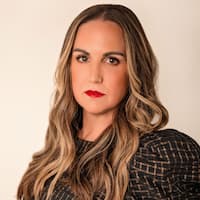Imagine you’re involved in a hit-and-run crash. The only information you can get is the license plate number. You have no idea if that person has car insurance coverage. What can you do?
Unfortunately, this scenario plays out often. Although nearly every state plus the District of Columbia has minimum car insurance coverage requirements, uninsured drivers remain an issue in the U.S.
The Insurance Research Council estimated in a 2021 study that 12.6% of motorists don’t have car insurance, and states like Mississippi have an uninsured rate of nearly double that number.
So what can you do? Here’s how to find out if someone has auto insurance coverage.
How to find out if another car is insured
If you’re in a crash and the other driver stops, get as much information about the other driver as possible. The more information you get, the better chance you will get a claim paid through their insurance.
One way to get this information is to ask the other driver for their insurance information directly.
Get the information — even if the crash was not significant or you’re not sure who’s at fault. Injuries, like whiplash, don’t always appear until after you’re home. You can jot down the information or snap a photo.
If the other driver refuses to share information, wait for the police to arrive, provided they were called. They will get the information for their accident report form and share it with both parties. An officer will cite the other driver if the person doesn’t have insurance.
If you’re involved in a hit-and-run crash, try to get the license plate number — even a partial plate will help track down the at-fault driver.
Information you need after a car accident
Information you will want to get includes:
- Name
- Address
- Phone number
- Insurance provider
- Car insurance policy number
- Drivers license number
- License plate or registration number
Don’t forget to write down a description of each car, including year, make, model and color. It’s also a good idea to write down the exact location and how it happened while it’s still fresh in your mind.
What to do if another driver doesn’t have insurance coverage?
If you’re in a crash and find the other driver doesn’t have insurance, don’t panic.
American Family Insurance said calling the police is a crucial first step. Not only will they navigate the situation, but more details in the report will be vital as you try to recover funds to cover your damages.
You should also get the other driver’s information, document details and photos from the scene. Do not accept cash.
That last bit of advice might seem unlikely, but uninsured motorists know they’re driving with a risk. That risk comes with high fines, so they might try to pay out of pocket for your damages.
You don’t know the full extent of the damages or your injuries at the accident scene, so never accept a cash deal.
Fines for not having insurance
States vary by the fines allowed against drivers without insurance. Here’s a sampling of states to show the various fines for not having insurance:
- Alabama: $500 to $1,000
- Arizona: $500 for first offense
- California: $100 to $200
- Florida: $500 reinstatement fee
- Hawaii: $500
- Indiana: Up to $1,000
- Minnesota: $200
- New York: Up to $1,500 plus a $750 reinstatement fee
- Pennsylvania: $300
- Vermont: Up to $500
- West Virginia: $200
Some states also allow license and registration suspensions and vehicle impoundments, which enable judges to sentence drivers without car insurance to jail time. For instance, in Kansas and Michigan, you can be sentenced to jail for driving without insurance.
How to find an insurance company by license plate
To check if a license plate insures a car, an excellent place to start is the police.
They can run a search through their system by license plate number. Police can likely tell you if another driver has car insurance and if they have enough coverage.
You can also contact your DMV. A license plate search will divulge insurance information for legitimate reasons. You can either go in person or online to find the needed forms.
Another option is to call your car insurance provider. If you provide them with the license plate number, they will investigate to find the car owner and contact their insurance company or the owner.
What to do after a hit-and-run accident
First, you must try to get the license plate number or part of it. Record other essential details, such as:
- Type of car and color
- Time of day
- Exact location
- Direction cars were headed
Take pictures of the vehicle damage.
Next, call the police. The police can run license plate searches and try to find a driver that way.
If you could only get part of the license plate number but didn’t call the police, you could still get some help tracking down the other driver.
If you have a legitimate reason to ask, you can go to your local Department of Motor Vehicles office and request they look up the plate number. If it’s a hit-and-run, that is considered a legitimate reason.
Also, don’t forget to call your car insurance company. They will begin the claims process. While your policy will cover some damage, it might not cover everything.
In addition to your deductible, your limits may not be high enough. This is where having the optional uninsured/underinsured motorist policy comes into play.
According to Nationwide, “This coverage may protect you against drivers who don’t have liability insurance or the money to pay for injuries and damages they cause.”
How to shop for car insurance if you don’t have coverage
Let’s say you find that you don’t have car insurance coverage. What can you do?
Most car insurance carriers have an online presence, so you can get a quote, connect with an agent and even purchase insurance without leaving the comfort of your couch.
You’ll want to get a quote from at least three car insurance companies for a proper comparison. Decide the liability limits you need and what optional coverages and deductibles you’re willing to pay.
Remember to look for discounts, such as bundling your home and auto with the same insurance company.
If you’re uncomfortable purchasing online, find an agent in your town who can do the legwork. Most major carriers also offer telephone services, where they can walk you through purchasing the right policy for your needs.
One warning: You may pay higher car insurance rates if your coverage lapses. That makes getting quotes from multiple companies vital to finding the most affordable coverage possible.





